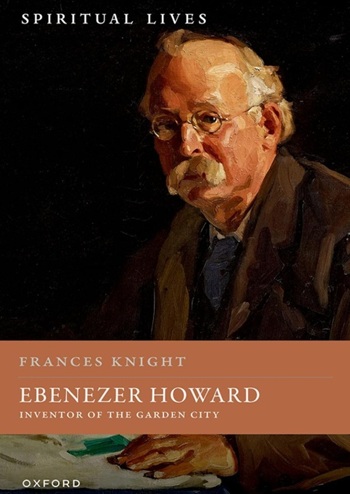Polished plaster
Contents |
[edit] Introduction
Plaster is a building material used for coating, protecting and decorating internal walls and ceilings. It can also be used to create architectural mouldings such as ceiling roses, cornices, corbels, and so on.
A wide range of decorative finishes may be grouped under the term ‘polished plaster’. They are characterised by mimicking decorative stone finishes such as polished marble or deeply-textured effects such as limestone or travertine. As polished plaster appears to be something it is not, it can be described as an illusion, giving a highly-realistic impression of texture and depth that has been prized and applied to great effect since ancient times.
[edit] Composition and application
Polished plaster is made from slaked lime, marble dust and /or marble chips – the exact ratio depending on the final effect required. Up to 40% of the final mix may be marble powder. Natural earth or synthetic pigments may also be added to provide special colour effects.
Polished plaster is typically applied to internal walls, ceilings and columns. A primer is first applied to the substrate followed by up to four layers of basecoat. A steel trowel is used to burnish (finish) the plaster to a glass-smooth effect; a protective wax may be applied to seal the finish.
Typical applications include hotels, public buildings, galleries, bars and restaurants. It has also become popular for luxury bathrooms and other wet areas due to its smooth, waterproof and anti-bacterial properties.
The final appearance depends on the material composition, the effects used and particularly the skill of the plasterer, who may be able to create effects ranging from plain, light polished surfaces to more highly burred and marble-type effects.
However, damage to polished paster can be difficult to repair.
[edit] Historical usage
The use of polished plaster goes back to the ancient Egyptians. It was also used by the Greeks and the Romans. The Roman military architect and engineer Vitruvius (c.90BC – c.20BC) extolled the virtues of polished plasters in his Ten Books on Architecture.
The next period of popularity came during the Italian Renaissance in Northern Italy when it was called ’marmorino’, short for marmorino veneziano (venetian polished plaster). It was used extensively both internally and externally, particularly as a background for ornate frescoes. Colour came from natural pigments but, due to their inconsistencies and variable strengths, required the expert manipulation of professional colourists. This was one reason it became a finish that was the preserve of the rich.
Another Venetian variant, stucco lustro, comprised a base of 2-3 layers of semi-dry marmorino followed by up to 10-15 fine coats of stucco. It was finished to a mirror-like effect using hot irons.
In 17th and 18th century Britain, the use of polished plaster on walls and columns for reasons of aesthetics, economy and practicality gave a highly-realistic impression of marble or travertine, creating an illusion of depth and texture, without requiring the stonemason’s craft – and at a fraction of the cost.
Today, not unlike the historical precedents, polished plaster finishes are undergoing a revival of interest and tend to lie at the upper end of the price range due to the labour input that is required.
[edit] Related articles on Designing Buildings
Featured articles and news
The UK's Modern Industrial Strategy: A 10 year plan
Previous consultation criticism, current key elements and general support with some persisting reservations.
Building Safety Regulator reforms
New roles, new staff and a new fast track service pave the way for a single construction regulator.
Architectural Technologist CPDs and Communications
CIAT CPD… and how you can do it!
Cooling centres and cool spaces
Managing extreme heat in cities by directing the public to places for heat stress relief and water sources.
Winter gardens: A brief history and warm variations
Extending the season with glass in different forms and terms.
Restoring Great Yarmouth's Winter Gardens
Transforming one of the least sustainable constructions imaginable.
Construction Skills Mission Board launch sector drive
Newly formed government and industry collaboration set strategy for recruiting an additional 100,000 construction workers a year.
New Architects Code comes into effect in September 2025
ARB Architects Code of Conduct and Practice available with ongoing consultation regarding guidance.
Welsh Skills Body (Medr) launches ambitious plan
The new skills body brings together funding and regulation of tertiary education and research for the devolved nation.
Paul Gandy FCIOB announced as next CIOB President
Former Tilbury Douglas CEO takes helm.
UK Infrastructure: A 10 Year Strategy. In brief with reactions
With the National Infrastructure and Service Transformation Authority (NISTA).
Ebenezer Howard: inventor of the garden city. Book review.
The Grenfell Tower fire, eight years on
A time to pause and reflect as Dubai tower block fire reported just before anniversary.
Airtightness Topic Guide BSRIA TG 27/2025
Explaining the basics of airtightness, what it is, why it's important, when it's required and how it's carried out.
Construction contract awards hit lowest point of 2025
Plummeting for second consecutive month, intensifying concerns for housing and infrastructure goals.
Understanding Mental Health in the Built Environment 2025
Examining the state of mental health in construction, shedding light on levels of stress, anxiety and depression.





















